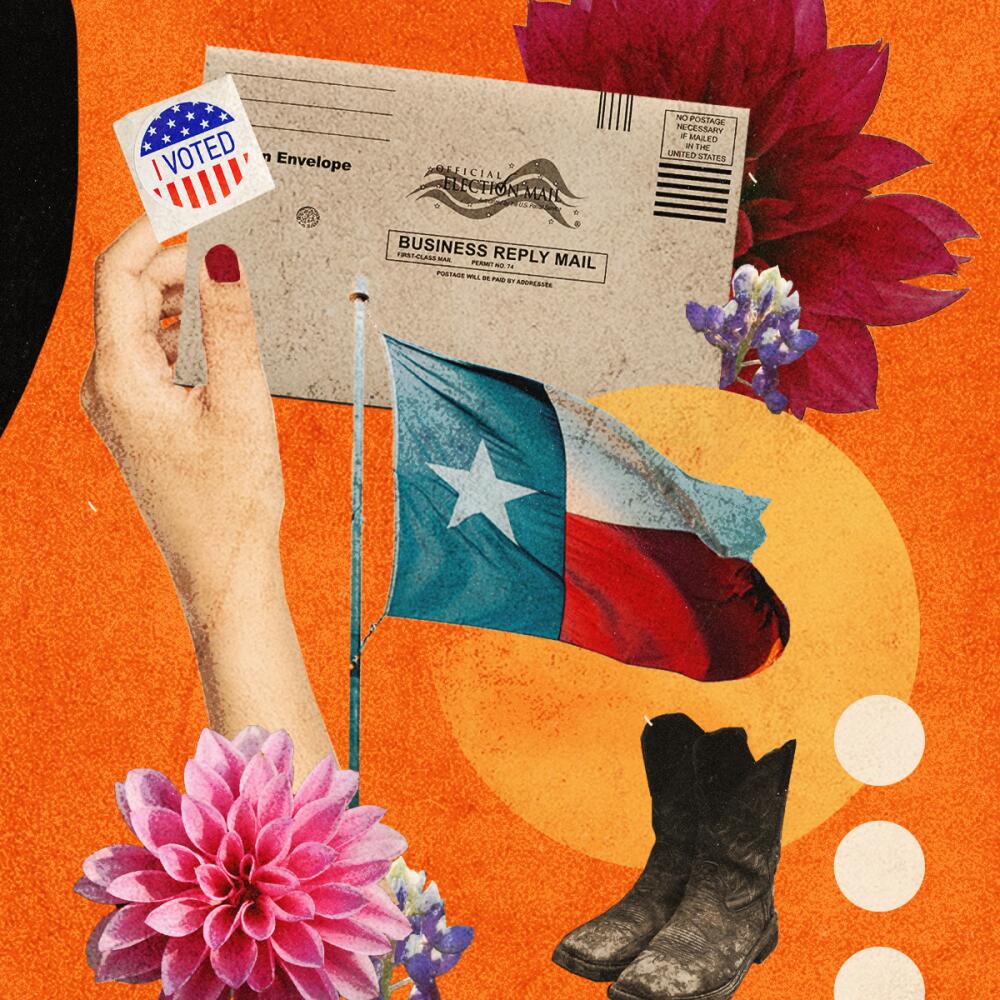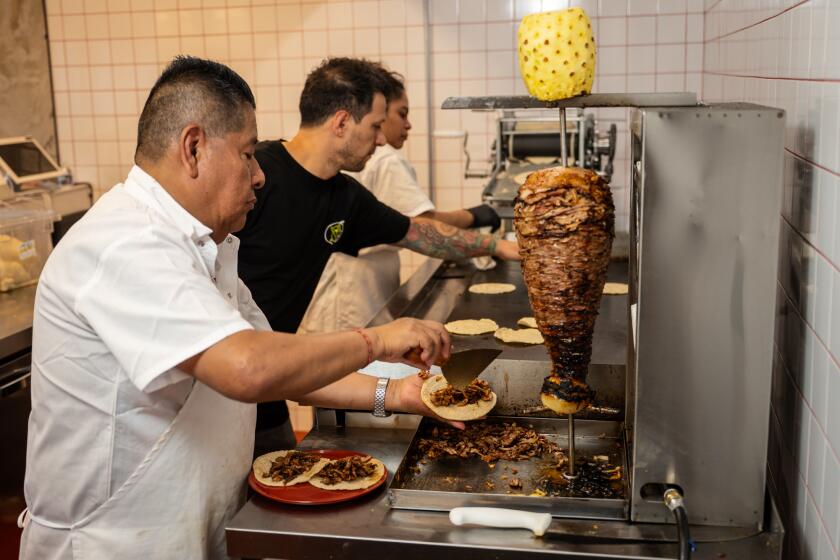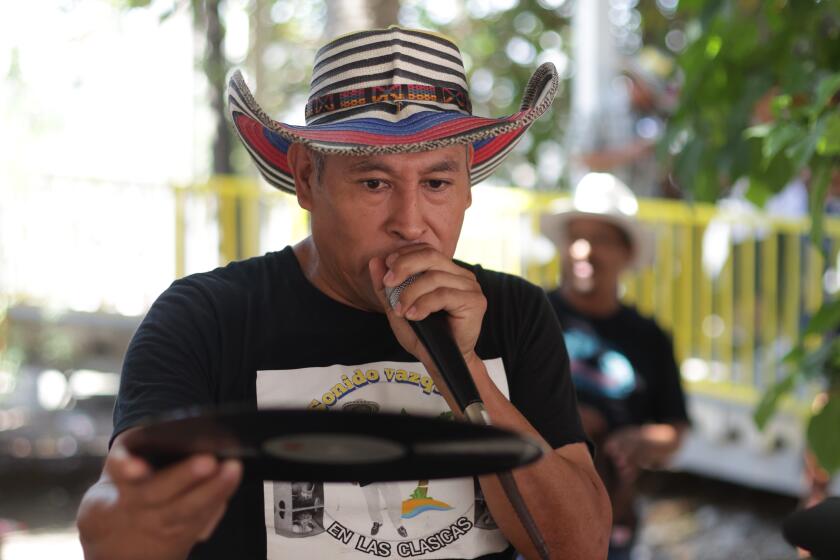
I will never forget riding in my auntâs car around Christmas as a kid to look at the lights and the decorations in a lavish Dallas suburb. This was an activity both she and my mom enjoyed. It didnât even have to be a Christmas thing. We would get in the car and go look at the nice houses. But this particular time sticks out to me because my aunt, ever the astute commentator, pointed at all the string lights and the inflatable snowmen and the plastic reindeers and said, âSee all this? Mexicans make this sâ happen.â
Iâm not exaggerating when I say that this was a perfect distillation of my own view of Mexican American identity, an identity that I didnât necessarily see as a race or as an ethnicity, but as a class.
While I grew up with my parents and my abuelos in Oklahoma, Texas played a central role in my upbringing. Most of my Mexican American family members were from there, and I lived closer to Wichita Falls, the Texas town where my mom grew up, than I did to Oklahoma City. In Texas, it was abundantly clear that Mexicans were the construction workers, the gardeners, the people who, as the popular saying goes, âdo the jobs no one else wants.â
That drive with my aunt was the first memory that came to mind when I read about the recent statistics out of Texas about Latinos outnumbering non-Latino white people in the state.
In places like Atlanta, where Latinos make up a smaller percentage of the population, tacos are in high demand but traditional taqueros are scarce.
It got me thinking about how we discuss rising demographics in general, and how those discussions, especially when they involve Latinos, lack class analysis and often imply an accompanying political power that doesnât necessarily exist.
Political pundits have long been reading the tea leaves of Latino demographics in the U.S. and making broad assumptions about them that donât quite pan out. For most of my natural life, itâs been foretold that Texas would turn purple or blue and buck the trend of going Republican. Thatâs on the tamer end of speculation, of course. Who among us can forget the âtaco trucks on every cornerâ warning issued by Latinos for Trump founder Marco Gutierrez?
âMy culture is a very dominant culture,â Gutierrez said at the time. âIt is imposing and itâs causing problems. If you donât do something about it, youâre going to have taco trucks on every corner.â
A pretty wild thing to say, to be sure, but not out of line with similar sentiments from right-wing politicians and even many Latinos themselves, particularly in Texas where some have grievances with immigrants from Latin America.
Of the five elements that comprise the culture â rapping, beatboxing, spinning turntables, breakdancing and graffiti â it is the latter that shaped my identity.
Itâs just one of the many things complicating the narrative about Latinos in the U.S. Many see themselves as people who âcame here the right wayâ and feel that recent immigrants and undocumented people are cheating the system.
Such cases certainly trouble the idea that Latinos vote overwhelmingly Democrat and place a high priority on immigration as an issue. While itâs true that the majority of Latinos say that Democrats tend to work harder for their vote, they consistently rank the economy and abortion above immigration, and they are far more likely to take climate change seriously.
But in Texas, perhaps the most important aspect of the rising Latino demographic in the state is that of class. Latinos in the state are more than twice as likely as non-Latino white Texans to be living below the poverty level, and it seems that Latino political power in the state lags far behind their population size.
Iâll put a finer point on all this. It seems that there are tiers of sophistication when it comes to narratives about the âLatino demographic.â The first and simplest of them all is that Latinos are flooding into the U.S., where they unerringly vote blue, turning red states purple.
The diabetes drug has become the latest weight loss craze, and it triggers bigger concerns over the inherited diet obsession within Latinx culture.
The second, gaining in nuance, says ânot so fast.â Republicans are making inroads with Latinos, many of whom are assimilated and hold views about undocumented immigrants that are more in lockstep with conservatives than with Democrats. Within the broad category of Latinos, many, like Cuban Americans, are much more likely to vote red. The idea of Latinos moving as a monolith or like a cohesive voting bloc is a myth. Latinos are more complicated and more heterodox than people give them credit for.
The second one holds its truths, to be sure. But when I look at these numbers out of Texas and I pair them with what I know from my family and from my experiences in political commentary, I would say there is a third narrative that isnât addressed as much, and itâs one that tells a story of intentional, calculated disenfranchisement.
We tend to focus a lot, when it comes to determining the values and beliefs of Latinos in the U.S., on their power as a voting bloc and what they do during elections. For one, this is hard to quantify, as the majority of Latinos in Texas are young and canât vote yet. But in addition, Texas has some of the most stringent voter suppression laws in the country, many of which target Latinos. Texas has been deemed the fifth-most difficult state to vote in, and its laws have targeted voters who need assistance with the English language.
The barrios of La Indepe used to be the margins of the industrial city, but now they are encircled by urban development. Given the governmentâs initiatives, often presented as progress, these barrios are the last obstacle standing in the governmentâs way.
Although I didnât have anywhere near as much education about Mexican American history at the time, I think maybe my aunt was right back then. In Texas, itâs long been true that the common Mexican American experience is being relegated to a class in which you are the backbone of the economy, but you are kept out of the halls of power and face significant hurdles to participating in the society where you are in fact the majority.
Sheer numbers donât tell the whole story, and they donât directly translate into influence over the political reality of a place. Some might see Latinos becoming the majority in Texas as change. What it actually highlights is just how much has remained the same over the years.
John Paul Brammer is a columnist, author, illustrator and content creator based in Brooklyn. He is the author of âHola Papi: How to Come Out in a Walmart Parking Lot and Other Life Lessonsâ based on his successful advice column. He has written for outlets like the Guardian, NBC News and the Washington Post. He will write a weekly essay for De Los.
More to Read
The Latinx experience chronicled
Get the Latinx Files newsletter for stories that capture the multitudes within our communities.
You may occasionally receive promotional content from the Los Angeles Times.










